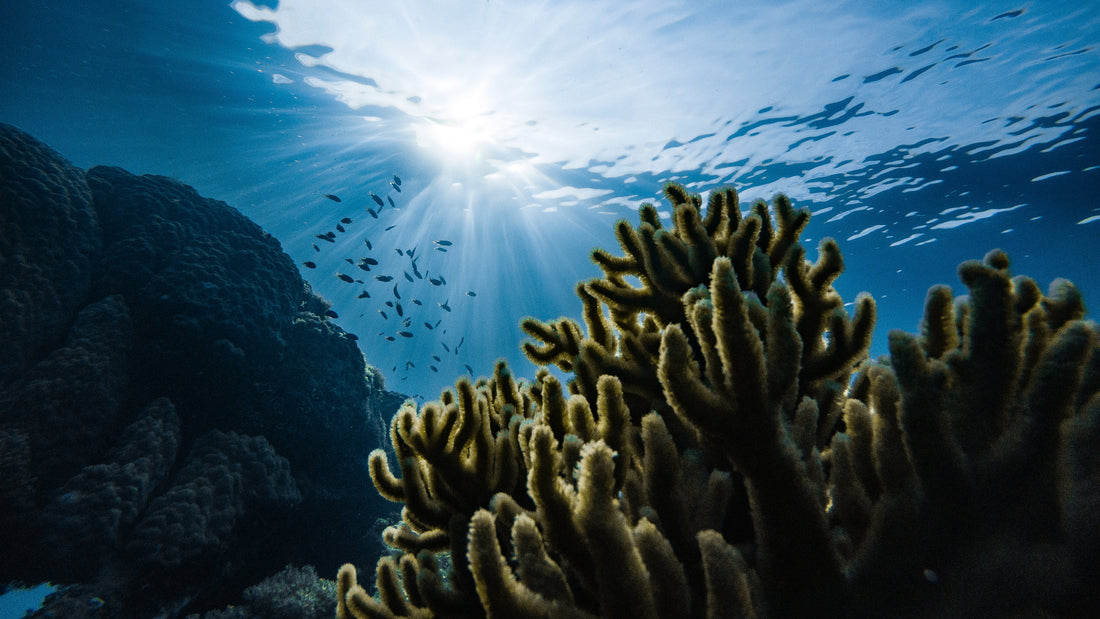Our ocean’s coral reefs are suffering, and chemicals commonly found in sunscreen lotions are extensively to blame for this tremendous epidemic.
These chemicals that protect our skin from the sun’s harmful UV rays are causing unreputable harm to the ocean’s environment. When you go into the water with sunscreen lotion on, the active chemicals get washed away and are absorbed into the ecosystems beneath you. About 14,000 tons of sunscreen chemicals wash into the oceans each year, directly affecting coral reef life. Pollution is a major cause of coral reef degradation as well. Wastewater treatment plants are critical in the water recycling process because of their function to treat contaminated water before re-entering bodies of water. Unfortunately, wastewater treatment plants have difficulty treating UV protecting chemicals, resulting in them being discharged directly into coastal waters.
Coral reefs are a vital component of ocean life, feeding and supporting as many as 1 million species of fish, invertebrates, and algae. Although coral may look like inanimate structures, they are living, photosynthesizing organisms. As coral develops, it forms branch-like-structures that many different species call home. Coral reefs also protect coastlines from the damaging effects of powerful waves caused by tropical storms and are a large source of nitrogen and other essential nutrients for marine life.
The most commonly found chemicals in coastal waters that have a direct impact on coral reef extinction include oxybenzone, enzacamene, octocrylene, and octinoxate. The most studied chemical with the biggest risk to the coral ecosystem is oxybenzone. Oxybenzone is a chemical-based additive found in more than 3,500 skincare products, including fragrances, soaps, lotions, and sunscreens. Oxybenzone has been shown to have multiple highly toxic effects in developing coral reefs; including DNA damage, abnormal skeleton growth and deformities. The chemical causes discoloration in coral, known as bleaching, robbing them of their multicolored pigments and reducing their structures. Oxybenzone contains nanoparticles that interrupt corals growth cycles, ultimately leading to them dying off.
The concerns about UV chemical's destruction to the environment and human health are growing, generating the public and government agencies to search for solutions. Some countries have gone to great lengths in correcting the damage by introducing bans on sunscreen chemicals. For example, Hawaii is the first state to pass a law prohibiting sunscreen use containing oxybenzone and octinoxate. The small island of Palau, known as one of the largest marine reserves on earth, announced a ban as well. While man-made chemicals and pollution are massive in the devastation of coral reefs, we are capable of helping restore these fragile ecosystems. It’s important to limit sunscreen use containing these active ingredients and find other forms of protection. Wearing sun-protective clothing, hats, and sunglasses are going to protect your skin and cause no damage to coral reef ecosystems. Our performance fabrics used at Montauk Tackle Company utilize recycled yarns infused with 50+ UPF sun protection. This allows our sun protection to stay inherent in the yarn and does not wash into our waterways or get absorbed into your bloodstream. Our fabric is designed to block the harmful rays of the sun, all while keeping you cool and comfortable. Do your part in protecting our fragile and important coral reefs by wearing sun-protective clothing and limiting the use of sunscreen chemicals.

